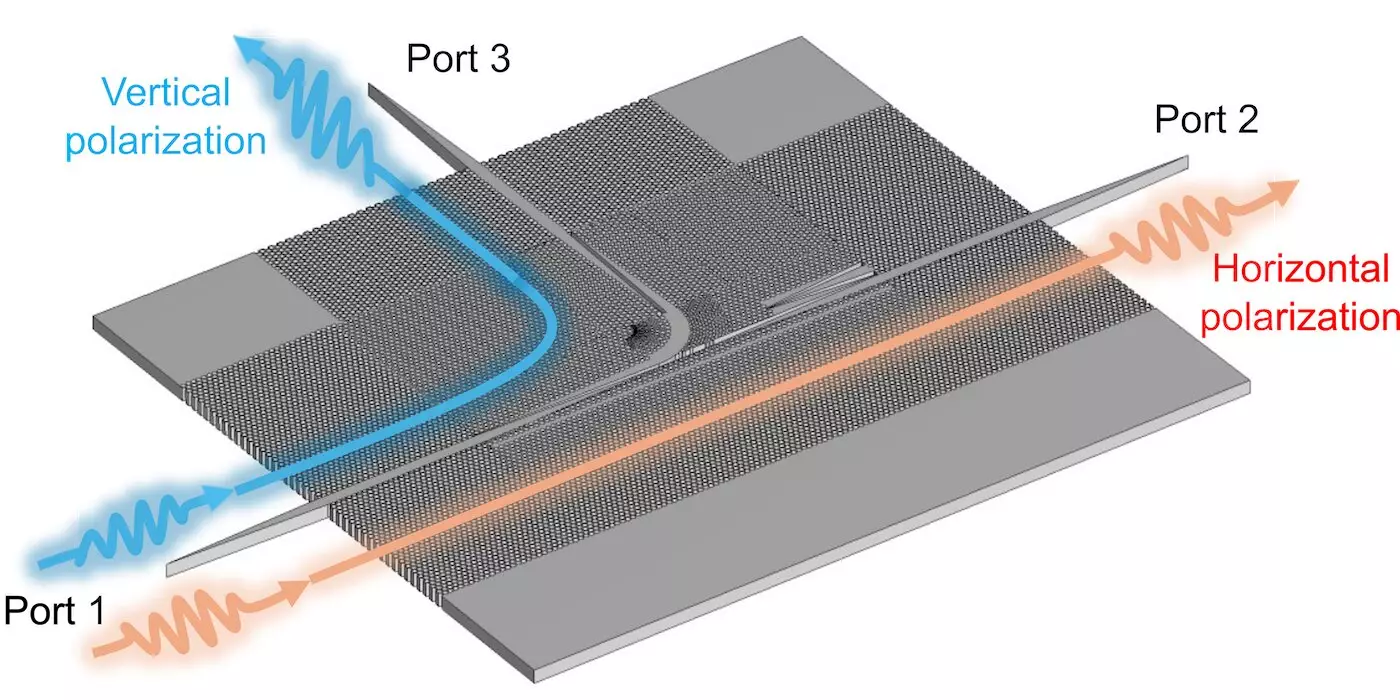As we stand on the brink of a new era in telecommunications, the emergence of 6G technology promises to redefine how data is communicated across the globe. Central to this revolution is the application of terahertz frequencies, which offer exponentially higher data transmission rates compared to existing communication systems. Researchers from the University of Adelaide have successfully developed an innovative polarization multiplexer that serves as a critical catalyst for unlocking this potential. Their groundbreaking work could pave the way for an entirely new landscape in high-speed wireless communication and data transfer.
The team’s research introduces a polarization multiplexer that operates with ultra-wideband capabilities, specifically functioning in the sub-terahertz J-band, which ranges from 220 GHz to 330 GHz. This new device allows multiple data streams to be transmitted simultaneously while occupying the same frequency band, significantly doubling the communication capacity without an increase in bandwidth. Traditional multiplexers serve as effective tools for managing multiple input signals, akin to combining various phone calls onto a single line. However, the innovation presented by this team not only optimizes this functionality but also reduces data loss, a common issue with existing multiplexers.
Professors and researchers involved in this project assert that their design represents a record-setting bandwidth for integrated multiplexers across any frequency range. With the potential for scalability, this technology could revolutionize optical communication bands in the future. The integration of this technology promises cost-effective production methods using standard fabrication processes, an essential factor for widespread adoption.
The implications of this advancement extend far beyond merely increasing communication capacity. As stated by Dr. Weijie Gao, one of the prominent researchers on the project, this innovation bolsters the reliability and robustness of terahertz communication systems. By enhancing the efficiency of data transfer, this polarization multiplexer is poised to significantly impact various fields, including high-definition video streaming, augmented reality applications, and the infrastructure backing next-generation mobile networks like 6G.
The potential applications of this technology are expansive. With the ability to handle massive volumes of data concurrently, sectors reliant on quick and efficient communication—such as telecommunication, media, and technology—stand to benefit immensely. Such advancements could ultimately lead to a more connected and responsive digital world, where delays in data transfer are substantially reduced.
Despite the promising prospects, the development of terahertz communication has not been without its challenges. Historically, researchers have struggled with issues surrounding spectrum management and effective utilization of available frequencies. The team from the University of Adelaide has made significant strides in addressing these hurdles, as highlighted in their publication in the journal Laser & Photonic Reviews.
Professor Masayuki Fujita, a co-author of this research, underscores the significance of overcoming critical technical barriers, emphasizing the potential for a renewed wave of research interest in this domain. Analysts within the field predict an escalation in innovative applications over the next few years, with significant collaborative efforts and technological refinements expected.
Looking ahead, the implications of this advanced polarization multiplexer could lead to noteworthy changes within three to five years. The anticipation of commercial prototypes and initial products suggests an accelerating pace towards practical applications. Researchers envision a decade from now where terahertz technologies are seamlessly integrated into various industries, ranging from telecommunications to Internet-of-Things (IoT) solutions.
The introduction of the terahertz polarization multiplexer heralds a transformative shift in the way we approach high-speed communications. Its ability to enhance data transfer capabilities while maintaining lower data loss positions this technology as a vital component for the realization of 6G networks and beyond. As research progresses and practical applications evolve, the telecommunications landscape will undoubtedly be enriched, ushering in a new era of connectivity and speed that was once thought to be a distant dream.


Leave a Reply